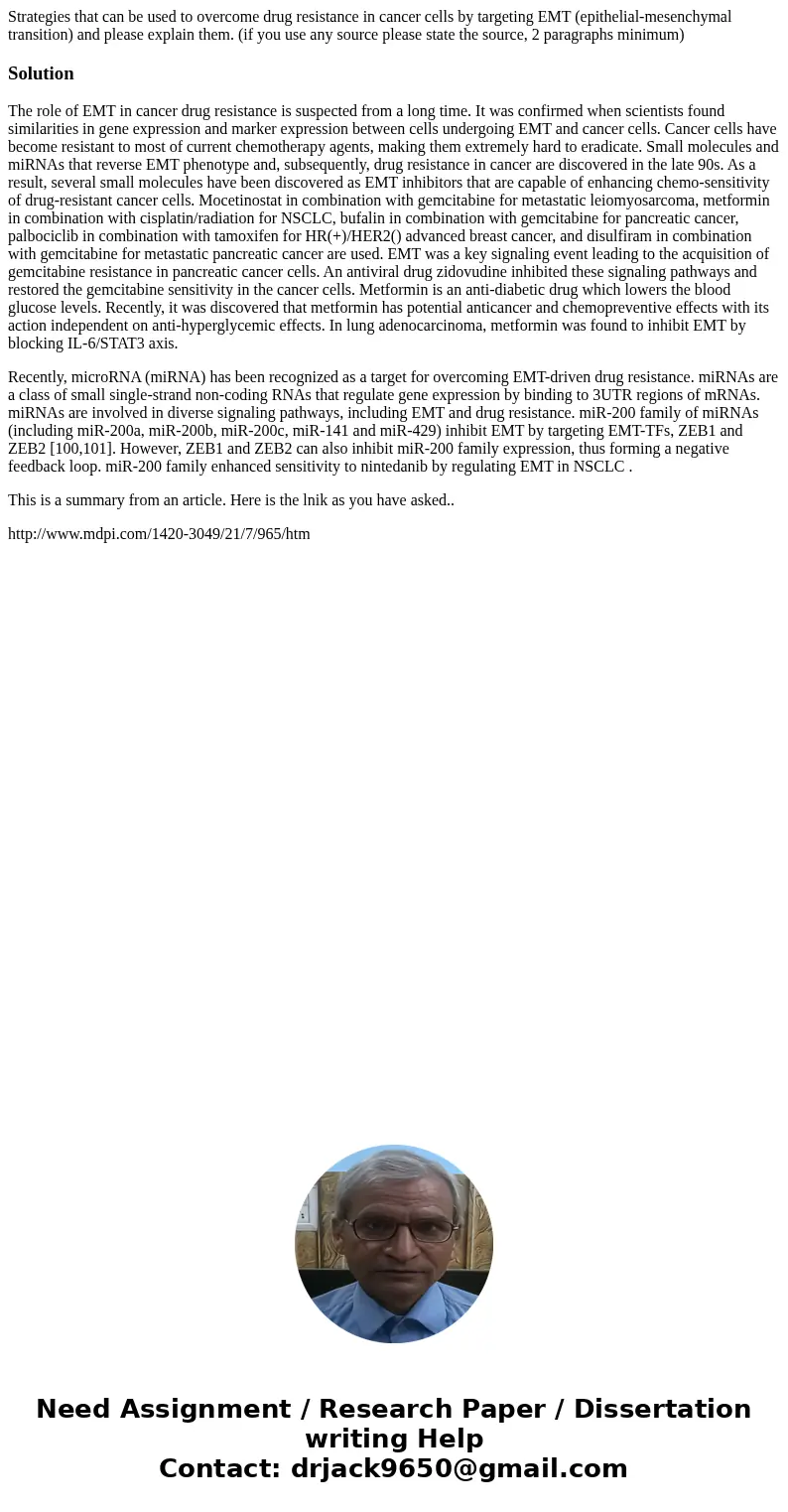Strategies that can be used to overcome drug resistance in c
Strategies that can be used to overcome drug resistance in cancer cells by targeting EMT (epithelial-mesenchymal transition) and please explain them. (if you use any source please state the source, 2 paragraphs minimum)
Solution
The role of EMT in cancer drug resistance is suspected from a long time. It was confirmed when scientists found similarities in gene expression and marker expression between cells undergoing EMT and cancer cells. Cancer cells have become resistant to most of current chemotherapy agents, making them extremely hard to eradicate. Small molecules and miRNAs that reverse EMT phenotype and, subsequently, drug resistance in cancer are discovered in the late 90s. As a result, several small molecules have been discovered as EMT inhibitors that are capable of enhancing chemo-sensitivity of drug-resistant cancer cells. Mocetinostat in combination with gemcitabine for metastatic leiomyosarcoma, metformin in combination with cisplatin/radiation for NSCLC, bufalin in combination with gemcitabine for pancreatic cancer, palbociclib in combination with tamoxifen for HR(+)/HER2() advanced breast cancer, and disulfiram in combination with gemcitabine for metastatic pancreatic cancer are used. EMT was a key signaling event leading to the acquisition of gemcitabine resistance in pancreatic cancer cells. An antiviral drug zidovudine inhibited these signaling pathways and restored the gemcitabine sensitivity in the cancer cells. Metformin is an anti-diabetic drug which lowers the blood glucose levels. Recently, it was discovered that metformin has potential anticancer and chemopreventive effects with its action independent on anti-hyperglycemic effects. In lung adenocarcinoma, metformin was found to inhibit EMT by blocking IL-6/STAT3 axis.
Recently, microRNA (miRNA) has been recognized as a target for overcoming EMT-driven drug resistance. miRNAs are a class of small single-strand non-coding RNAs that regulate gene expression by binding to 3UTR regions of mRNAs. miRNAs are involved in diverse signaling pathways, including EMT and drug resistance. miR-200 family of miRNAs (including miR-200a, miR-200b, miR-200c, miR-141 and miR-429) inhibit EMT by targeting EMT-TFs, ZEB1 and ZEB2 [100,101]. However, ZEB1 and ZEB2 can also inhibit miR-200 family expression, thus forming a negative feedback loop. miR-200 family enhanced sensitivity to nintedanib by regulating EMT in NSCLC .
This is a summary from an article. Here is the lnik as you have asked..
http://www.mdpi.com/1420-3049/21/7/965/htm

 Homework Sourse
Homework Sourse